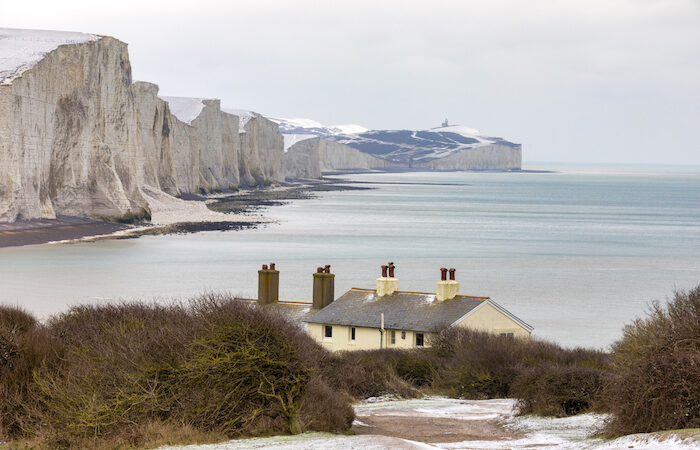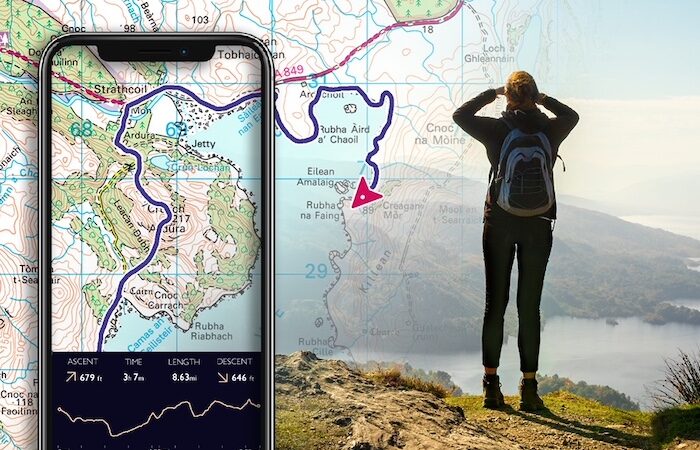How to stay organised like a pro on your next hike

The summer months are approaching and it’s the perfect time to start planning some hikes. Get out into nature and boost those endorphins. If you’re not used to long, adventurous walking, here you will find all the tips you need to stay organised like a pro on your next hike.
Do your preparation
Before you get carried away, setting off with a backpack after coming across a dream location on social media, get yourself properly prepared. You need to put together a hike-prep routine, as the key to a great hike is all in the preparation. This includes researching your hike’s trail, transportation, apps to use, and of course, what to take. So let’s break it down.
What apps are good for a hike?
Your smartphone is your saviour on a hike. Not only can it be your guide and method of communicating (when there’s signal), there’s also handy apps that will help you stay organised before, during, and after the trail.
- Google Maps:
Starting with the main one, get exactly where you need to be, and navigate with online and offline route options. If you know the trail is going to be tricky for signal, you can download some routes. Otherwise, it’s a case of if the signal drops mid-route, you may still be able to view the route, or if there’s no signal at all from the start, you can still use the app, but you won’t get all its features. - Hiking Project:
When looking up hiking trails, this app is brilliant as it’s community-based content that comes with reviews, images, and descriptions that are vetted by the site. - AllTrails:
This is also a good one for planning routes. You can look up elevation gains, ability levels and duration, as well as tips and tags. For instance, some routes can have the dog-friendly tag if you want your furry pal to join you. - What3words:
This clever app can give a precise location by using a random selection of three words. This can certainly help with hiking, whether you want to look up and share precise locations for a hiking group to meet at, or for them to follow on a trail, the three words will take them straight there. The app is also incredibly useful if you are in an emergency, as you can share the three words to help navigate emergency services right to you. - Seek by iNaturalist:
If you come across any wildlife, plants, or scenic spots you want to learn more about, you can record your observations through this app. You can connect with nature experts to learn more about what you’ve encountered, and can basically become a citizen scientist. - SkyView Lite:
If you’re planning some rural hiking trips, chances are you might be doing some camping. Whether you’re wild-camping or pitching up at an official campsite, when night falls, and you’re under the stars, there’s an app you can use to identify constellations, witness travelling satellites, and discover distant galaxies – literally, awesome.
What to do in an emergency
As mentioned, the app what3words is an excellent one to help with emergencies when you’re out and about in the wilderness, giving the emergency services an exact pinpoint location.
But it’s worth sharing more apps and tips to help in an emergency on a hike. For instance, did you know that you can schedule a delayed message to go out in case something happens?

With ICE Contact, you can set up an emergency contact and put together a message with GPS location tracking and an image to inform the contact where you will be in case they won’t hear from you by a certain time.
There’s also the RapidSOS app, where you can contact emergency services, like the police, fire department or paramedics, even if you’re struggling with a signal.
And what’s also smart about this app is that even if you don’t know where you are, it will send your location to the closest emergency service dispatch centre.
Another tip to add is knowing about the 55 redirect call. If, for any reason, you need to call 999 but can’t talk, you can call 55 when prompted to on the line.
Normally, when you call 999 but remain silent, the operator will ask you to cough, make a sound, or tap the phone keys to communicate somehow, but this may still be difficult.
And if this happens, you can call 55 to be redirected to the police, but if you don’t, the call will end. It’s about staying on the line as long as you can to help the police pick up on the situation. And of course, do try to get somewhere where you can speak as soon as you can.
Planning the route
Get those Pinterest boards up, and create that itinerary. Research will certainly pay off. Things to think about when researching the right route that you may forget about are things like car parks and costs.
And on that note, always carry a card and some loose change, just in case one form of payment isn’t accepted or not working.
Like the apps mentioned above, you can look up difficulty levels, elevations and handy tips on the trails that take your fancy, but do explore any travel and hike forums online too.
Read blogs about them to get better insights from other hikers, and add relevant, valuable notes to your itinerary. Have the itinerary on your phone, as well as printed off.
What to take on a hike
Just a good pair of hiking boots, a suitable outfit, backpack and a water bottle, right?
That’s a good start. But again, please do create a list to make sure you will have everything you’ll need, as well as what you may need.
It also depends on whether you plan on camping on your trip, but here’s a good suggestion for a day’s hike, with things you may forget about:
- Maps! Good, old-fashioned printouts in case technology fails
- Digital and printed itineraries
- Smartphone with the useful apps installed, mentioned above
- A list of emergency contacts and ways to deal with an emergency – both in digital format on your phone as well as printed off
- Waist bag and backpack

- Towel
- Water bottle(s), lunch and snacks
- Antibacterial wipes/wet wipes
- Tissue/toilet roll
- Pocket toilet or Shewee
- Small plastic bag for any waste
- First aid kit
- Water-resistant overalls
- Torch/head torch

- Bungee cords for storage and attachments
- Paracords – these are brilliant for survivalist hacks
- Portable power bank to charge your gadgets
- Earphones for your apps, e.g. music
- Change of clothes and a few pairs of socks/underwear in case of any falls or muddy trails – also prepare for fast-changing weather during the day/night. You can also get packable waterproof jackets
- Good hiking boots and hiking outfit – you may also want some hiking sticks
- Wallet/purse with ID, money card and loose change
The use of bungee cords in hikes
Bungee cords are mentioned because they are such a simple, yet ingenious piece of equipment to take on a hike or camping trip. For starters, suitable ones can be used to pin down items to roof racks when travelling on the road, but they also come in handy on a trek.
For instance, many backpacks already have them to provide more room for storage when you need it. They help the bag elasticate for more space, and also provide external storage for things that may not fit inside, e.g. a rolled towel, bulky coat or sleeping bag.
You can also use them to hook things onto your backpack, like an extra pair of shoes, or if you want to simply air-dry items that you don’t want stashed away inside, dampening other items.
Depending on how long your hike will be, or if you’re camping, bungee cords also can become your makeshift washing lines.
If you find yourself needing to change into drier clothes from a wet, muddy trail, you can tie them to some trees, for example, or to your tents to air-dry clothes, shoes etc.
They can also be used to tie down rain tarp if you think you’re going to get caught in a storm, or they can be used to secure things down to stop them from blowing away in heavy gusts.
And if you are exposed to the elements all day, with things stored externally (like a towel), you can also use the cords to tie down a waterproof cover over the backpack and items.






